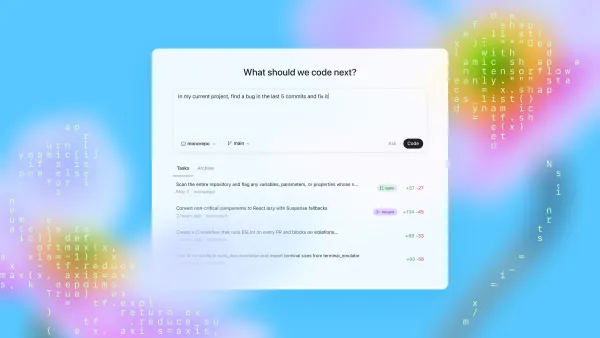Can You Reliably Detect Machine Generated Content?

The explosion of AI-generated text from models like ChatGPT, Gemini, and Claude has created an urgent need: how do we distinguish machine-written content from human writing? This challenge affects educators combating plagiarism, journalists fighting misinformation, and platforms moderating content at scale.
Enter DetectGPT—a groundbreaking approach that detects AI-generated text without requiring any training data. Instead of building specialized classifiers, it uses a clever insight about how language models work to identify their own output.
The Detection Challenge
Traditional detection methods face significant limitations:
- Data dependency: Most classifiers need large, labeled datasets of human vs. machine text
- Model fragility: Detectors fail when encountering new models or writing domains
- Access restrictions: Proprietary systems like GPT-4 limit detection customization
These constraints have driven researchers toward zero-shot detection—methods that work without training data for each new model or domain.
What Is DetectGPT?
DetectGPT, introduced by Mitchell et al. (2023), takes a radically different approach. Rather than training a classifier, it leverages a fundamental property of language models: machine-generated text tends to sit at local maxima of the model's probability distribution.
The Core Insight
When a language model generates text, it naturally produces content that aligns with its internal probability patterns. This creates a distinctive "probability curvature" signature that DetectGPT can identify.
Key Advantages
- Zero-shot operation: No labeled training data required
- Domain robust: Works across different text types
- Minimal requirements: Only needs access to a similar language model
- Real-time capability: Can detect synthetic content on the fly
How Probability Curvature Works
DetectGPT's detection process follows three steps:
- Calculate base probability: Measure how likely the model thinks the text is
- Generate perturbations: Create slightly modified versions of the text
- Compare probabilities: If the original has much higher probability than perturbations, it's likely machine-generated
The reasoning: Human text sits randomly on the probability landscape, while machine text occupies carefully optimized peaks.
Implementation Guide
Here's a simplified implementation demonstrating DetectGPT's core logic:
Environment Setup
# Create virtual environment
python -m venv detectgpt-env
source detectgpt-env/bin/activate # Windows: detectgpt-env\Scripts\activate
# Install dependencies
pip install torch transformers numpy nltk
Load the Model
import torch
from transformers import GPT2LMHeadModel, GPT2TokenizerFast
# Use GPT-2 for demonstration
model_name = 'gpt2-medium'
tokenizer = GPT2TokenizerFast.from_pretrained(model_name)
model = GPT2LMHeadModel.from_pretrained(model_name)
model.eval()
# Set padding token
tokenizer.pad_token = tokenizer.eos_token
Create Test Samples
machine_text = """
Science has advanced remarkably as neural networks seamlessly
weave words into coherent narratives about the universe's wonders,
creating an artificial sense of curiosity.
"""
human_text = """
Sunlight bathed the hillside in warm glow. Children ran barefoot
through tall grass, their laughter echoing across the valley with
pure, unrestrained joy.
"""
Generate Text Perturbations
import random
import nltk
nltk.download('punkt', quiet=True)
from nltk.tokenize import word_tokenize
def perturb_text(text, num_perturbations=10, mask_fraction=0.15):
"""Generate variations by randomly masking words"""
words = word_tokenize(text)
n_mask = max(1, int(len(words) * mask_fraction))
perturbations = []
for _ in range(num_perturbations):
masked_words = words.copy()
mask_indices = random.sample(range(len(words)), n_mask)
for idx in mask_indices:
masked_words[idx] = tokenizer.mask_token if hasattr(tokenizer, 'mask_token') else '<mask>'
perturbations.append(' '.join(masked_words))
return perturbations
Calculate Log Probabilities
def compute_log_probability(text):
"""Calculate model's log probability for text"""
inputs = tokenizer(text, return_tensors='pt', padding=True, truncation=True, max_length=512)
with torch.no_grad():
outputs = model(**inputs, labels=inputs["input_ids"])
# Extract log probability from loss
sequence_length = inputs["input_ids"].shape[1]
log_prob = -outputs.loss.item() * sequence_length
return log_prob
Compute DetectGPT Score
import numpy as np
def detectgpt_score(text, num_perturbations=100, mask_fraction=0.15):
"""Calculate DetectGPT score based on probability curvature"""
# Original text probability
original_prob = compute_log_probability(text)
# Perturbation probabilities
perturbations = perturb_text(text, num_perturbations, mask_fraction)
perturbed_probs = [compute_log_probability(p) for p in perturbations]
# Calculate curvature (difference between original and average perturbed)
avg_perturbed = np.mean(perturbed_probs)
std_perturbed = np.std(perturbed_probs)
# Normalize score
if std_perturbed > 0:
score = (original_prob - avg_perturbed) / std_perturbed
else:
score = original_prob - avg_perturbed
return {
'score': score,
'original_prob': original_prob,
'avg_perturbed': avg_perturbed,
'std_perturbed': std_perturbed
}
Run Detection
# Test both samples
samples = {
'Machine-generated': machine_text,
'Human-written': human_text
}
for label, text in samples.items():
result = detectgpt_score(text)
print(f"\n{label}:")
print(f" DetectGPT Score: {result['score']:.3f}")
print(f" Original Probability: {result['original_prob']:.2f}")
print(f" Avg Perturbed Probability: {result['avg_perturbed']:.2f}")
print(f" Interpretation: {'Likely AI' if result['score'] > 1.5 else 'Likely Human'}")
Limitations and Considerations
Technical Limitations
- Model alignment: Detection accuracy depends on similarity between detector and generator models
- Computational cost: Requires multiple model evaluations per text sample
- Length sensitivity: Performance varies with text length
Practical Challenges
- Adversarial resistance: Post-processing can reduce detection effectiveness
- Domain shifts: Specialized or technical text may confuse detection
- Threshold selection: Optimal cutoff values vary by use case
Alternative Approaches
Supervised Methods
- Grover (2019): Trains dedicated classifiers on labeled data
- GPTZero (2023): Uses perplexity and burstiness features
Watermarking
- Kirchenbauer et al. (2023): Embeds hidden patterns during generation
- Requires cooperation from text generators
Visual Tools
- GLTR (2019): Highlights suspicious tokens for human inspection
- Useful for educational contexts
Future Directions
The arms race between generation and detection continues to evolve. Promising research areas include:
- Hybrid approaches: Combining multiple detection signals
- Cross-model detection: Generalizing across different architectures
- Robustness improvements: Defending against adversarial attacks
- Efficiency optimization: Reducing computational requirements
Conclusion
DetectGPT represents a significant advance in AI text detection, offering a principled, zero-shot approach based on probability curvature. While not perfect, it provides a valuable tool for identifying machine-generated content without requiring extensive training data.
As language models continue to improve, detection methods must evolve accordingly. DetectGPT's model-based approach offers flexibility and theoretical grounding that position it well for this ongoing challenge.
References
- Mitchell, E., Lee, Y., Warstadt, A., Manning, C. D., & Finn, C. (2023). DetectGPT: Zero-Shot Machine-Generated Text Detection using Probability Curvature. arXiv:2301.11305.
- Gehrmann, S., Strobelt, H., & Rush, A. M. (2019). GLTR: Statistical Detection and Visualization of Generated Text. arXiv:1906.04043.
- Zellers, R., et al. (2019). Defending Against Neural Fake News (Grover). arXiv:1905.12616.
- Kirchenbauer, J., et al. (2023). A Watermark for Large Language Models. arXiv:2301.10226.
- Tian, E. (2023). GPTZero: AI Detection Tool. Available at: gptzero.me



